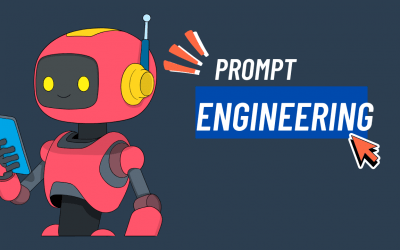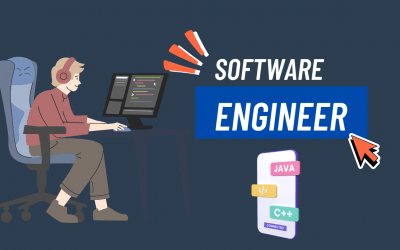Java remains one of the most ubiquitous programming languages in enterprise development. Mastering Java coding practice requires understanding fundamental principles, advanced techniques, and contemporary development methodologies. This comprehensive guide explores essential aspects of Java programming that transform novice developers into proficient practitioners.
Foundational Principles of Java Coding Practice
Object-Oriented Programming Paradigms
Java’s architecture revolves around object-oriented programming principles that form the cornerstone of effective coding practice. Encapsulation ensures data integrity by restricting direct access to object attributes through carefully designed accessor and mutator methods. This principle prevents unauthorized modifications and maintains class invariants throughout the object’s lifecycle.
Inheritance facilitates code reusability through hierarchical class relationships. Developers leverage superclass functionality while extending capabilities through subclass specialization. The “is-a” relationship exemplifies proper inheritance usage, where a Dog class inherits from an Animal superclass, gaining fundamental biological characteristics while implementing canine-specific behaviors.
Polymorphism enables dynamic method resolution, allowing objects of different classes to respond to identical method calls with class-specific implementations. This principle reduces code duplication and enhances maintainability through consistent interface contracts.
Memory Management and Garbage Collection
Java’s automatic memory management distinguishes it from lower-level languages like C++. The Java Virtual Machine (JVM) handles memory allocation and deallocation through sophisticated garbage collection algorithms. Understanding heap and stack memory allocation patterns optimizes application performance and prevents memory leaks.
Reference types occupy heap memory, while primitive types reside in stack memory. Developers must comprehend object lifecycle management to avoid creating unnecessary object references that impede garbage collection efficiency. Weak references and soft references provide mechanisms for memory-sensitive applications requiring fine-grained control over object retention.
Exception Handling Methodologies
Robust exception handling separates professional Java code from amateur implementations. The try-catch-finally construct provides structured error management, ensuring resource cleanup regardless of execution path. Checked exceptions enforce compile-time error handling, while unchecked exceptions address runtime anomalies.
Custom exception classes extend the standard exception hierarchy, providing domain-specific error information. Meaningful exception messages facilitate debugging and enhance code maintainability. The principle of “fail-fast” encourages immediate error detection rather than silent failure propagation.
Essential Java Syntax and Language Constructs
Variable Declaration and Type Systems
Java’s static typing system ensures type safety at compile time, preventing runtime type errors that plague dynamically typed languages. Variable declarations specify both type and identifier, establishing clear contracts between data and operations. The distinction between primitive and reference types affects memory allocation patterns and equality comparisons.
Wrapper classes provide object representations of primitive types, enabling integration with Java’s collection framework. Autoboxing and unboxing mechanisms seamlessly convert between primitive and wrapper types, though excessive usage may impact performance through unnecessary object creation.
Final variables create immutable references, enhancing thread safety and preventing accidental modifications. The finalkeyword applied to class declarations prevents inheritance, while final methods resist overriding in subclasses.
Control Flow Mechanisms
Conditional statements and iteration constructs control program execution flow. The enhanced for-each loop simplifies collection traversal while maintaining type safety. Switch expressions, introduced in recent Java versions, provide functional-style conditional logic with improved readability.
Break and continue statements modify loop execution, though excessive usage may indicate design flaws requiring refactoring. Labeled breaks enable controlled exit from nested loop structures, though such constructs often signal overly complex algorithms.
Method Overloading and Polymorphism
Method overloading enables multiple method definitions with identical names but different parameter signatures. This feature enhances API usability by providing flexible method invocation options. Compile-time method resolution selects the most specific applicable method based on argument types.
Method overriding implements runtime polymorphism through dynamic method dispatch. The @Override annotation prevents accidental method overloading when overriding was intended, catching subtle bugs at compile time.
Advanced Java Programming Techniques
Generics and Type Erasure
Generics introduce compile-time type safety for collections and algorithms. Type parameters enable creation of reusable components that work with various data types while maintaining type safety. Bounded type parameters restrict generic types to specific class hierarchies, combining flexibility with type constraints.
Type erasure removes generic type information at runtime, ensuring backward compatibility with pre-generic Java code. Understanding erasure limitations prevents common pitfalls like generic array creation and runtime type checking of parameterized types.
Wildcards provide flexibility in generic type usage. Upper bounded wildcards (? extends T) enable read-only access to collections, while lower bounded wildcards (? super T) facilitate write operations with type safety.
Lambda Expressions and Functional Programming
Lambda expressions introduce functional programming concepts to Java, enabling concise representation of anonymous functions. The Stream API leverages lambda expressions for data processing pipelines that transform collections through functional operations.
Method references provide syntactic sugar for lambda expressions that merely invoke existing methods. Constructor references enable functional-style object creation, particularly useful in stream operations requiring object instantiation.
Functional interfaces define single abstract methods that lambda expressions can implement. The @FunctionalInterfaceannotation ensures interface compliance with functional programming requirements.
Concurrency and Multithreading
Java’s concurrency utilities provide sophisticated mechanisms for parallel programming. The java.util.concurrentpackage offers thread-safe collections, execution frameworks, and synchronization primitives that simplify concurrent programming.
Thread pools manage worker threads efficiently, avoiding the overhead of thread creation and destruction. The ExecutorService interface provides abstractions for task submission and lifecycle management.
Synchronization mechanisms prevent race conditions and ensure thread safety. The synchronized keyword provides mutual exclusion, while volatile variables ensure memory visibility across threads. Higher-level constructs like ReentrantLock offer advanced locking capabilities with timeout and interruption support.
Code Quality and Best Practices
Design Patterns Implementation
Design patterns provide proven solutions to recurring programming problems. The Singleton pattern ensures single instance creation, though modern implementations prefer enum-based approaches for thread safety and serialization compatibility.
The Factory pattern abstracts object creation, promoting loose coupling between client code and concrete implementations. The Observer pattern enables event-driven programming through publisher-subscriber relationships.
The Strategy pattern encapsulates algorithms, enabling runtime algorithm selection. This pattern exemplifies the open-closed principle, allowing new algorithms without modifying existing code.
Code Documentation and Commenting
Javadoc comments provide standardized documentation that integrates with development tools. Well-written documentation explains method contracts, parameter requirements, and return value semantics. Documentation should focus on “why” rather than “what,” as code structure typically reveals implementation details.
Inline comments clarify complex algorithms or business logic that may not be immediately apparent. However, excessive commenting often indicates code that requires refactoring for clarity.
Unit Testing and Test-Driven Development
Unit testing validates individual components in isolation, ensuring correctness and preventing regression. JUnit provides a comprehensive framework for test creation and execution. Test methods should be atomic, independent, and repeatable.
Mock objects simulate dependencies, enabling isolated testing of components with external dependencies. The Mockito framework provides powerful mocking capabilities for creating test doubles.
Test-driven development (TDD) emphasizes writing tests before implementation, ensuring code meets requirements and maintaining high test coverage. This approach promotes better design through testability considerations.
Performance Optimization Strategies
Algorithmic Complexity Analysis
Understanding Big O notation enables informed algorithm selection for performance-critical applications. Time complexity analysis reveals how algorithm performance scales with input size, while space complexity indicates memory requirements.
Choosing appropriate data structures significantly impacts performance. HashMap provides O(1) average-case lookup time, while TreeMap offers O(log n) operations with sorted key ordering. ArrayList excels at indexed access, while LinkedList optimizes insertion and deletion operations.
Memory Profiling and Optimization
Memory profiling identifies performance bottlenecks and memory leaks. Tools like VisualVM and JProfiler provide detailed insights into heap usage, garbage collection behavior, and object allocation patterns.
String concatenation optimization prevents unnecessary object creation through StringBuilder usage. Immutable strings create new objects for each concatenation operation, while StringBuilder maintains a mutable buffer for efficient string building.
Object pooling reduces garbage collection overhead for frequently created objects. However, pooling should be applied judiciously, as modern JVMs optimize object allocation for short-lived objects.
Database Connectivity Best Practices
JDBC connection pooling prevents connection establishment overhead through connection reuse. Connection pools maintain a cache of database connections, significantly improving application performance.
Prepared statements prevent SQL injection attacks while providing performance benefits through query plan caching. Parameter binding ensures type safety and prevents malicious SQL injection attempts.
Transaction management ensures data consistency through ACID properties. Proper transaction scoping minimizes lock contention and prevents deadlock scenarios.
Modern Java Development Tools and Frameworks
Integrated Development Environments
Modern IDEs provide comprehensive development support through syntax highlighting, code completion, and refactoring tools. IntelliJ IDEA and Eclipse offer sophisticated debugging capabilities, including conditional breakpoints and expression evaluation.
Code analysis tools identify potential issues before runtime, including unused variables, null pointer exceptions, and performance antipatterns. Static analysis integration prevents common programming errors through compile-time verification.
Build Automation Tools
Maven and Gradle automate build processes, dependency management, and deployment procedures. These tools provide standardized project structures and lifecycle management, ensuring consistent build processes across development teams.
Dependency management resolves library conflicts and ensures version compatibility. Transitive dependency resolution automatically includes required libraries, simplifying project configuration.
Version Control Integration
Git integration enables collaborative development through distributed version control. Branching strategies facilitate parallel development while maintaining code stability through feature branches and merge requests.
Continuous integration pipelines automatically build and test code changes, ensuring code quality through automated verification. These pipelines integrate with testing frameworks to provide immediate feedback on code modifications.
Conclusion
Java coding practice encompasses fundamental principles, advanced techniques, and modern development methodologies. Mastering object-oriented design, understanding memory management, and implementing robust error handling form the foundation of professional Java development. Advanced features like generics, lambda expressions, and concurrency utilities enable sophisticated application development.
Code quality through design patterns, comprehensive testing, and performance optimization ensures maintainable and efficient applications. Modern development tools and frameworks streamline the development process while maintaining code quality standards.
Continuous learning and practice refinement distinguish expert Java developers from novices. The language’s evolution introduces new features and best practices that require ongoing adaptation and skill development. Through deliberate practice and adherence to established principles, developers can achieve mastery in Java programming and contribute effectively to complex software projects.
Other Articles
The Art and Science of Prompt Engineering: Crafting the Future of AI Interaction
Beyond Keywords – Defining Prompt Engineering We stand at the precipice of a new paradigm in human-computer interaction. The rise of sophisticated Large Language Models (LLMs), such as GPT-4 and its contemporaries, has shifted our communication with technology from...
What is a Software Engineer
The Architects of Digital Reality Software engineers constitute the fundamental workforce orchestrating our technologically mediated existence. These professionals transmute abstract concepts into functional applications that permeate every facet of contemporary life....
Angular TypeScript: A Comprehensive Guide to Modern Web Development
Introduction to Angular TypeScript Integration Angular's symbiotic relationship with TypeScript represents a paradigmatic shift in modern web development methodologies. This powerful amalgamation emerged from Google's recognition that large-scale applications require...




